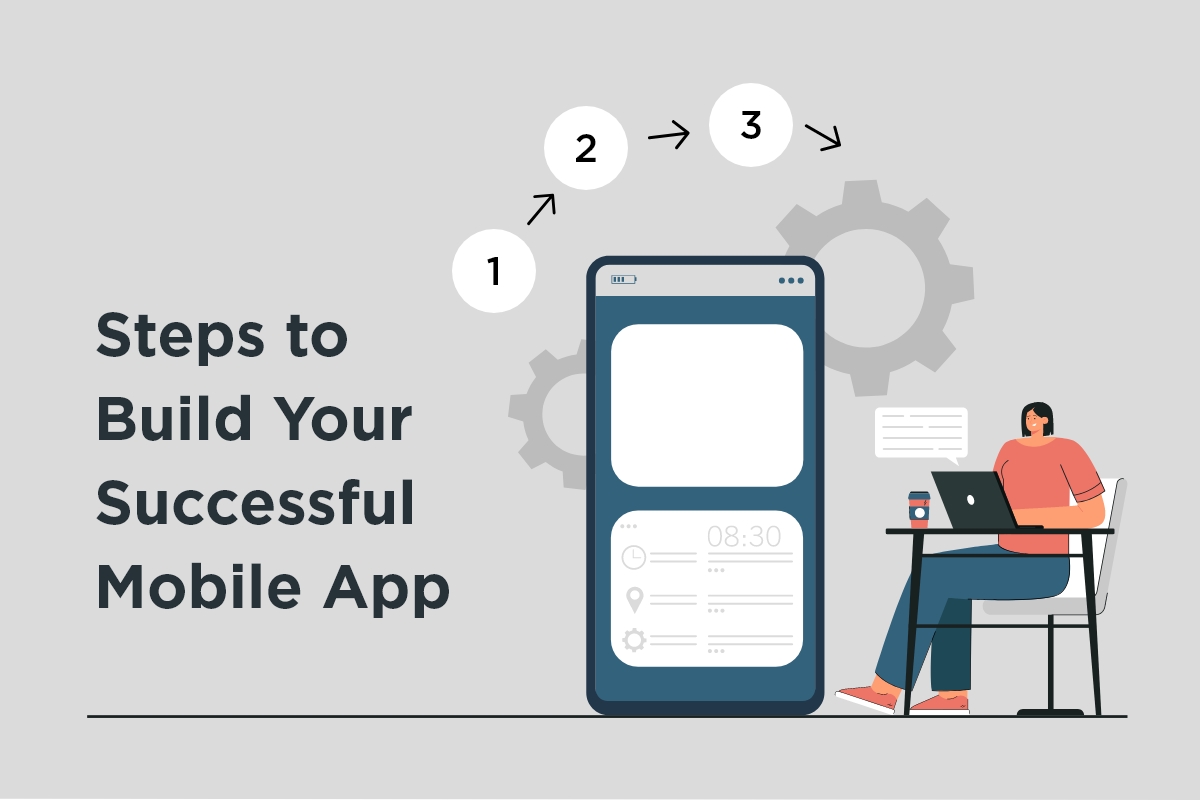In today’s fast-paced society, the mobile app industry is exploding. As a result, mobile marketing tactics are becoming increasingly competitive. Because of the many variables involved, mobile app development services must be very picky about how they go about mobile application creation. To create a successful mobile app, you must follow a step-by-step procedure throughout the mobile app development lifecycle.
You’ll need a deep understanding of the market and considerable experience building mobile apps to stand out from the competition. You must be confident that your product is well-designed and properly aligned with the market need.
We understand the significance of every stage in developing a successful mobile application. We’ll present you with this step-by-step mobile app creation process today. Before we start, let’s go through the basics of mobile app development.
Fundamentals of Mobile App Development
When considering how to create a mobile app or what process to follow, you’ll encounter a slew of perplexing issues.
- What is the first step in mobile app development?
- What are the critical components of a successful mobile app?
- How much does it cost to develop a mobile app?
- How long does it take to create a mobile app?
- What are some common mistakes made during mobile app development?
- How can you ensure your mobile app is successful?
Before you create a thorough strategy for your mobile application or engage a mobile app development firm, all of these are good queries that must be resolved. So let’s start by understanding the step-by-step mobile app development process:
Step-by-Step Mobile App Development Process
Below are the major steps in the mobile app development process:
- Project Requirement Discussion
During the first phase of a mobile app project, the developer must talk with the client about project goals and constraints. This is where you’ll determine what the app will do, how it will do it, and what technologies will be used.
- Business Insight and Estimation
After the project requirements have been finalized, it’s time to start working on the business analysis. This is where you’ll assess the project’s feasibility and estimate the resources required to complete it.
You’ll need to create a test plan document that describes the testing scope and goal, but the project demand determines it. This will allow you to track the project’s progress and ensure it is on schedule.
- Signing NDA
If you’re working with sensitive data, you’ll need to sign a non-disclosure agreement (NDA) before starting the project. This will protect your client’s data and ensure that it is not shared with anyone outside the project.
- Wireframing of the app
Following that, you’ll need to build app wireframes. You’ll define the app’s overall architecture and flow here. Wireframes are essential for planning the user experience and ensuring that all the necessary features are included.
For the application/website, the wireframe serves as a pillar. It can help you understand how the system would work if running. The wireframe enables accurate planning of the development schedule.
- UI/UX design
After the wireframes have been approved, it’s time to start working on the UI/UX design. This is where you’ll create the app’s visual elements and ensure they are user-friendly. For a mobile app development company, this is one of the essential steps in the process.
- Developing Your Mobile Application from Scratch
It’s time to start development after the design has been approved. You’ll write the program and ensure it meets all the needs here. The three stages of mobile app development are as follows.
The first part is the Front end App Development which includes the following:
- Developing the User Interface
- Creating the app logic
- Implementing API calls
The second part is Back-end App Development which includes the following:
- Setting up the server
- Database creation and configuration
- API development and integration
The third part is the API Integration which includes the following:
- Setting up push notifications
- Integrating with social media platforms
- Payment gateway integration
- Q/A Testing
After the app has been developed, it’s time to test it. This is where you’ll ensure that all the features are working as expected and that there are no bugs.QA/QC Testing aims to guarantee that the app is high-quality. It lowers the cost of development and results in a higher-quality app. The more time you spend on the mobile application development process, the more expensive it gets to fix any flaws. The mobile app development services will significantly impact your app’s cost and quality.
- Launching Your Application
After the app has been tested and approved, it’s time to launch it. This is where you’ll submit it to the App Store or Google Play and make it available to users.
You’ll want to monitor your app’s usage via mobile analytics services after it has gone live and evaluate how effective it is. Check for any mention of crashes or other user-reported problems as well.
- Post Production Support
After launching the app, you’ll need to provide post-production support. This is where you’ll fix bugs and ensure that the app is always up-to-date. You’ll also need to provide customer support if users have any app problems. Your mobile app development company should be able to provide post-production support for an additional fee.
Final Words
It’s not easy to build a successful mobile app. It takes a lot of preparation and execution to pull off. You’ll be able to create a successful app if you follow the instructions in this article. Always keep the user experience in mind and test the app thoroughly before launching it.










